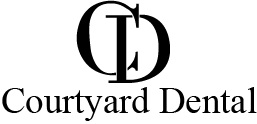Tooth health is a vital aspect of our overall well-being, yet many people often overlook it until problems arise. With so much information available, understanding how to care for your teeth can be overwhelming. When faced with dental issues like decay or damage, you may find yourself pondering a tough question: Should you pull the tooth or save it? The decision isn't just about immediate pain relief; it's also about long-term health and function. Navigating the world of dental extractions versus restorative treatments requires knowledge and careful consideration. So let’s dive into this important topic to help you make an informed choice that keeps your smile bright and healthy!
What is a Dental Extraction?
Dental extraction is the process of removing a tooth from its socket in the jawbone. This procedure may be necessary for various reasons, including severe decay, infection, or overcrowding.
When a tooth has become irreparable due to damage or disease, extraction might be the best option. Sometimes, wisdom teeth are removed proactively to prevent future complications.
The procedure itself is typically performed by a dentist or oral surgeon under local anesthesia. Patients usually experience minimal discomfort during the removal.
After an extraction, proper care is essential to promote healing and minimize the risk of infection. Following your dentist's post-operative instructions can aid in recovery and ensure optimal outcomes for your dental health journey.
The Benefits and Risks of Dental Extractions
Dental extractions can provide immediate relief from pain caused by decay or infection. Removing a problematic tooth often eliminates discomfort and allows for quicker healing, especially in cases of severe damage.
However, there are risks involved with the procedure. Post-extraction complications like dry socket can occur, leading to prolonged pain and recovery time. Infection is another potential concern that patients should be aware of.
Moreover, losing a tooth may affect biting and chewing efficiency. It can also impact your smile and overall confidence over time.
Patients must weigh these benefits against possible downsides when considering extraction as an option for their oral health challenges. It's essential to consult with a dental professional who understands individual needs before making any decisions about extractions versus other treatments like root canals in San Ramon, CA.
Alternative Options for Saving a Tooth
When faced with the prospect of losing a tooth, several alternatives can help preserve your natural smile.
- One popular option is dental crowns. These caps strengthen and protect damaged teeth while blending seamlessly with your existing ones.
- Another choice is root canals in San Ramon, CA. This procedure removes infected tissue from inside the tooth while preserving its structure. It's often a go-to solution for deep decay.
- Bonding is also an effective method for minor chips or fractures. A resin material adheres to the affected area, restoring both function and appearance.
- Orthodontic treatment can sometimes reposition misaligned teeth instead of extracting them. By moving teeth into better alignment, you can maintain your full set without sacrificing health or aesthetics.
Exploring these options allows patients to prioritize their oral health while keeping their smiles intact.
Factors to Consider when Deciding between Pulling or Saving a Tooth
When deciding whether to pull or save a tooth, several factors come into play.
- First, consider the extent of damage. A tooth with severe decay may not be salvageable.
- Next, think about your overall dental health. If you have other issues like gum disease or multiple problematic teeth, extracting one might be more beneficial in the long run.
- Cost is another important factor. Dental procedures can vary widely in price, and sometimes saving a tooth requires extensive treatment that could strain your budget.
- Personal comfort matters too. Pain from an infected tooth could affect your daily life significantly. Weighing this against potential discomfort during recovery after extraction is essential.
- Consult with your dentist for their expert opinion. They can provide insights based on your unique situation and help guide you toward the best decision for maintaining optimal oral health. Contact us to learn more.
Tips for Maintaining Good Oral Health
Maintaining good oral health is simpler than you might think.
- Start with daily brushing. Use fluoride toothpaste and brush for at least two minutes, twice a day.
- Flossing is just as important. It removes plaque buildup between teeth where brushes can’t reach. Make it a part of your routine to keep your gums healthy.
- Regular dental check-ups are essential too. Visiting your dentist every six months helps catch any potential issues early on.
- Consider what you eat and drink as well. Limit sugary snacks and beverages that can lead to decay. Instead, opt for crunchy fruits and vegetables that promote gum health.
- Stay hydrated by drinking plenty of water throughout the day. This natural habit washes away food particles and keeps your mouth moist, reducing the risk of cavities.
- Don’t forget about using mouthwash to complement your oral hygiene efforts!
Conclusion
Making the decision to pull or save a tooth can be daunting. It's essential to weigh the benefits and risks of dental extractions carefully. While some situations may necessitate extraction, many alternatives exist for preserving your natural teeth.
When weighing your options, consider factors such as long-term oral health, potential complications from procedures like root canals in San Ramon, CA, and your personal comfort level with each choice. Consulting a skilled dentist can provide valuable insight tailored to your specific situation.
Maintaining good oral hygiene is crucial regardless of the path you choose. Regular check-ups and proper brushing techniques play pivotal roles in keeping your mouth healthy over time. Staying informed and proactive about dental care will lead you toward making decisions that are best for both your immediate needs and long-term well-being.
Call us at 925-855-1604 or schedule an online appointment to learn more about root canal treatment and to explore your options with our dentists’ expert suggestions.
